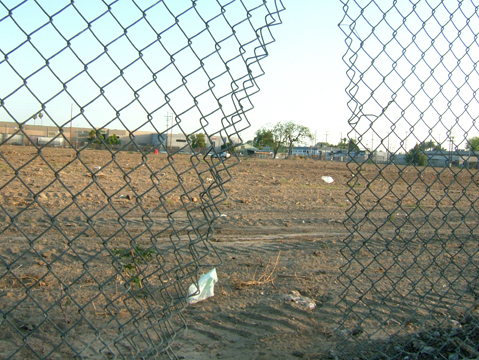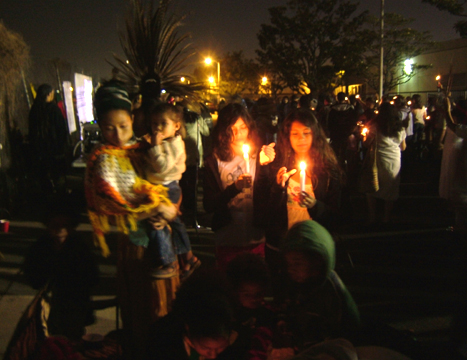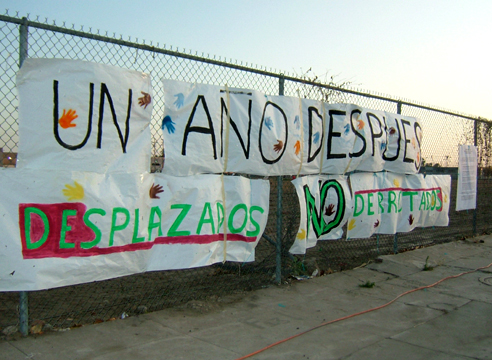| About Us | Contact Us | Calendar | Publish | RSS |
|---|
|
Features • latest news • best of news • syndication • commentary Feature Categories IMC Network:
Original Citieswww.indymedia.org africa: ambazonia canarias estrecho / madiaq kenya nigeria south africa canada: hamilton london, ontario maritimes montreal ontario ottawa quebec thunder bay vancouver victoria windsor winnipeg east asia: burma jakarta japan korea manila qc europe: abruzzo alacant andorra antwerpen armenia athens austria barcelona belarus belgium belgrade bristol brussels bulgaria calabria croatia cyprus emilia-romagna estrecho / madiaq euskal herria galiza germany grenoble hungary ireland istanbul italy la plana liege liguria lille linksunten lombardia london madrid malta marseille nantes napoli netherlands nice northern england norway oost-vlaanderen paris/Île-de-france patras piemonte poland portugal roma romania russia saint-petersburg scotland sverige switzerland thessaloniki torun toscana toulouse ukraine united kingdom valencia latin america: argentina bolivia chiapas chile chile sur cmi brasil colombia ecuador mexico peru puerto rico qollasuyu rosario santiago tijuana uruguay valparaiso venezuela venezuela oceania: adelaide aotearoa brisbane burma darwin jakarta manila melbourne perth qc sydney south asia: india mumbai united states: arizona arkansas asheville atlanta austin baltimore big muddy binghamton boston buffalo charlottesville chicago cleveland colorado columbus dc hawaii houston hudson mohawk kansas city la madison maine miami michigan milwaukee minneapolis/st. paul new hampshire new jersey new mexico new orleans north carolina north texas nyc oklahoma philadelphia pittsburgh portland richmond rochester rogue valley saint louis san diego san francisco san francisco bay area santa barbara santa cruz, ca sarasota seattle tampa bay tennessee urbana-champaign vermont western mass worcester west asia: armenia beirut israel palestine process: fbi/legal updates mailing lists process & imc docs tech volunteer projects: print radio satellite tv video regions: oceania united states topics: biotechSurviving Citieswww.indymedia.org africa: canada: quebec east asia: japan europe: athens barcelona belgium bristol brussels cyprus germany grenoble ireland istanbul lille linksunten nantes netherlands norway portugal united kingdom latin america: argentina cmi brasil rosario oceania: aotearoa united states: austin big muddy binghamton boston chicago columbus la michigan nyc portland rochester saint louis san diego san francisco bay area santa cruz, ca tennessee urbana-champaign worcester west asia: palestine process: fbi/legal updates process & imc docs projects: radio satellite tv |
printable version
- js reader version
- view hidden posts
- tags and related articles
View article without comments South Central Farm: Encampment Reunion 2007by A Sunday, Jun. 17, 2007 at 11:09 AMLOS ANGELES, June 13, 2007 – One year to the day after the forced evictions of the South Central Farmers from their land by a small army of Sheriffs and LAPD the farmers held a reunion in the streets outside the now barren land.
Farmers and their supporters filled the eastern most block of Martin Luther King Street for a rally and street party that lasted well into the night. The farmers remain committed to their struggle to for the land and despite the displacement from their land they continue to find ways to provide the poor of South Central with fresh fruits and vegetables.
One year later there is no warehouse on the site and no signs of any construction. Prompting many to ask, what was the hurry to evict the farmers. It is rumored that the real estate investor, Ralph Horowitz, who destroyed the farm can not find buyers for land and is losing money for every day the land sits unused. There are unconfirmed reports that about 30 people reoccupied the land in the late night hours and spent the night on the land. No uniformed police or squad cars were seen at this event. There were a few suspect undercover agents from unknown agencies believed to be spying on the event but other than that no incidences with police have been reported.
Report this post as:
2by A Sunday, Jun. 17, 2007 at 11:09 AM
error
Report this post as:
3by A Sunday, Jun. 17, 2007 at 11:09 AM
error
Report this post as:
4by A Sunday, Jun. 17, 2007 at 11:09 AM
error
Report this post as:
5by A Sunday, Jun. 17, 2007 at 11:09 AM
error
Report this post as:
6by A Sunday, Jun. 17, 2007 at 11:09 AM
error
Report this post as:
SC campesino farmers return is timelyby as Arnold promises agribusiness mas rio agua Tuesday, Jun. 19, 2007 at 1:55 PMThe southcentral farm collective's return to their land is great news indeed. Just in time to challenge the false claims made by Arnold "Waffen SS" Schwartzenegger that "We need to build more storage, and we have to build conveyance, the canal, all of those kinds of things.” and export even more water from the delta to industrial agribusinesses throughout the state..
Here's a written response to Arnold's lust for dam building that instead encourages our human society adapt to the natural ecosystem by changing our methods of farming. The southcentral farming collective provides people with real time examples of polycropping with biodiversity and other water reducing methods that industrial agriculture has no interest in learning. However, human survival itself may soon encourage our learning about the sc campesino farming methods!! original article @; http://www.indybay.org/newsitems/2007/06/15/18427610.php?show_comments=1#18428319 "Governor Schwarzenegger Supports Peripheral Canal around Delta" By Dan Bacher "Governor Arnold Schwarzenegger, confirming the worst fears of fishing and environmental groups, called for the construction of a peripheral canal around the Delta and the building of more dams at a town meeting in Bakersfield on June 14. This is the first time that the Governor has publicly announced his support for a peripheral canal. The voters in 1982 turned down a proposition funding a canal, due to the environmental catastrophe it was expected to inflict on the Delta, and each legislative attempt to build it has been defeated because of strong opposition by conservation groups. The call for building a canal and more storage facilities couldn’t have come at a worse time. The Delta smelt, a small 2 to 3 inch fish that is found only in the Sacramento-San Joaquin River Delta, is on the verge of extinction, due to massive increases in water exports by the state and federal governments over the past five years. Other species, including winter run chinook, spring run chinook, longfin smelt and green sturgeon, are expected to follow the smelt over the abyss if the Delta smelt becomes extinct. Yet Scharzenegger has no concern whatsoever for the Delta smelt and other imperiled fish on the Delta – or for following the state and federal and state Endangered Species Acts and other laws that mandate the protection of fish populations. Apparently having no knowledge of existing California dams and reservoirs, Schwarzenegger, as a prelude to his call to build more dams and a peripheral canal, claimed that no dams have been built in California since the late 1970s. “Do you know that for 20 years—well, actually since the late ‘70s—they have not built a dam?” said Schwarzenegger. “ I mean, think about that. They have not built a dam.” In reality, a number of dams and reservoirs have been constructed in California since the late seventies. Sugar Pine Reservoir near Foresthill was constructed in 1981, San Justo Reservoir in Hollister was constructed during 1987 and Los Vaqueros near Livermore was constructed during 1994-1997. After making this false claim, Schwarzenegger launched into his plea for construction of the peripheral canal and more water storage facilities. “And since the ‘80s, they have not done any conveyance, built any conveyance that delivers the water,” the Governor continued. “In the meantime, since then, we have gone from a population of 20 million to a population of 37 million.” “We need more water,” he said. “We need more storage. We need to build more storage, and we have to build conveyance, the canal, all of those kinds of things.” He also blasted fishing groups and environmentalists for opposing plans to build more dams and a canal, referring to a recent meeting that he had with some selected folks in the environmental community. “I know the environmentalists don’t like to create and talk even about conveyance,” Schwarzenegger acknowledged. “They don’t like that. And they don’t like to build more water storage. I understand it when you come from their point of view. They were up there in my office. We were all talking yesterday about it. They want to do another five year study.” Rejecting any further study of the environmental consequences of a canal that would disrupt the Delta ecosystem even more than it is already, he called for action on building the canal and water storage facilities. “There is no more study,” he concluded. “We have studied this subject to death. It’s time for action.” It appears that Schwarzenegger's role as the “Terminator” in his movies was a prelude to his real life role as the “Terminator” of the California Delta and its fisheries. There is no doubt in my mind that Governor Arnold Schwarzenegger is the worst-ever Governor for California’s fisheries and environment, as evidenced by his call for a canal and more dams at a time when more water conservation and less water exports are desperately needed to save the Delta. Note: The California Department of Water Resources, after a temporary halt on pumping at its South Delta facilities after fishery biologists documented the killing of increasing numbers of Delta smelt in its pumps in late May, began exporting water again on Sunday, June 10. The U.S. Bureau of Reclamation, after reducing water exports down to one pump, opened up two more pumps on Wednesday to deliver water to subsidized agribusiness on the west side of the San Joaquin Valley. " Comments; -------------------------------------------------------------------------------- Time 4 less rio agua consumption by agribusiness plantations Instead try permaculture, visit Cuba's biodynamic farms Monday Jun 18th, 2007 12:20 PM This dam building speech by Arnold indicates that an all out boicott of agribusiness plantations is needed in CA! The monocultura plantation style industrial agriculture is destroying the riparian ecosystems of the collective Sacramento y San Joaquin river valleys.. Growing fruits and vegetables does NOT require the excess water usage currently claimed at the expense of los rios by industrial agribusiness. There are other more efficient models in permacultura and polycultura (intercropping) collective farms that do not require the excess water (& pesticides, herbicides, etc..) input of industrial agribusiness. Instead of building additional dams that strangle the air from the lungs of fishes, we as a progressive human society can adapt our methods of farming to be more harmonious with the ecosystem.. The list of successful polycultura permaculture farms that do not depend on petrochemical fertilizer or excess water inputs are too long to list, though here's a few sites to visit; How Cuba overcame petrochemical dependency; "Since going from petrochemical intensive agricultural production to organic farming and gardening, Cuba now uses 21 times less pesticide than before the Special Period. They have accomplished this with their large-scale production of bio-pesticides and bio-fertilizers, exporting some of it to other Latin American countries. Though the transition to organic production and animal traction was necessary, the Cubans are now seeing the advantages. "One of the good parts of the crisis was to go back to the oxen," said Miguel Coyula, a community development specialist, "Not only do they save fuel, they do not compact the soil the way the tractor does, and the legs of the oxen churn the earth." "The Cuban agricultural, conventional, 'Green Revolution' system never was able to feed the people," Sanchez said. "It had high yields, but was oriented to plantation agriculture. We exported citrus, tobacco, sugar cane and we imported the basic things. So the system, even in the good times, never fulfilled people's basic needs." Drawing on his permaculture knowledge, Sanchez said, "You have to follow the natural cycles, so you hire nature to work for you, not work against nature. To work against nature, you have to waste huge amounts of energy." " Visit Cuba Por Favor @; http://globalpublicmedia.com/articles/657 UN visit to SC campesino farm; "Our intervention was presented on May 18, 2007 in front of the Special Rapporturr on Human Rights violations. Along with other peoples of the world, we waited for our own turn and spoke on displaced people in poor urban settings. ON Monday, 21 we sat on a panel as a speaker on Migration issues in an urban setting. We talked about the need to access land in order to move from a dependent community to an independent community that can feed their families and surrounding communities in order to deal with diseases in our community; obesity and diabetes. If we cannot change this cycle we will only be part of the market that is full of dependent poor communities on medication since they do not have the right to good quality foods! Yes, we will perish as a community due to the diseases that have taken over and our lack to change our behaviors." Por favor, visit the sc farm @; http://www.southcentralfarmers.com/ The above two examples of sustainable polycultura farms are being practiced by many organic farmers throughout the US and the world. However, industrial agribusinesses remain the dominant force of land holdings in CA, and this stifles the growth of water saving polycultura farms. Then we're left with the monopoly of land use retained by industrial agribusiness and their constant requirements for mucho rio agua. However, even that current demand can be lessened with other measures besides dam building.. In addition to polycultura farms saving water there's also great potential for water storage (and flood buffers) by restoration of Sacto/SanJo valley ecosystem wetlands. The longer time of wetlands water storage capacity allows for greater groundwater percolation and aquifer recharge. This aquifer recharge is not possible if all the agua gets washed off the plantation (along with soil, nitrates, etc..) and into the ocean! Wetlands also provide needed habitat for migratory birds.. "For the first time, water leaders are saying the county needs to be thinking about protecting areas that refill the underground aquifer from which Chico gets its water. An estimated 30 million acre-feet of water is contained in the lower Tuscan aquifer. But if areas of key recharge are paved over, the resource could be diminished. Groundwater is fairly simple. Rain falls onto the ground, percolates through the various layers of soil, and collects in a groundwater aquifer. Later the water is pumped up from the ground. Most domestic wells in Butte County tap into the top layers of the valley 50-150 feet. But deeper down is the lower Tuscan, an aquifer scientists are just beginning to understand. Dudley explained there are several ways to approach groundwater recharge, but each idea has pros and cons. In Fresno, for example, water is directly applied to the land in the form of shallow pools. This type of recharge also provides side benefits, such as wetland habitat. The method requires sandy/gravel soils and the costs are moderate. Dudley said creeks could also be used to recharge groundwater. There might be ways to slow down creeks over the key groundwater replenishment areas to help with recharge." article @; http://www.watershedportal.org/news/news_html?ID=87 BTW, slowing down creeks could also be part of providing vernal pool habitat with protection, the slow flowing vernal pool wetlands are in fact moving as creeks, recharging the aquifer as they slowly move towrds major rios.. Native valley oaks also add moisture to the summer air via transpiration, and should be encourages as hedgerows to prevent moisture loss.. "What is a hedgerow? A hedgerow is a line or group of trees, shrubs, perennial forbs, and grass that is planted along field edges, fencelines, drainage channels, property borders, and diverging land-uses. A native plant hedgerow uses plants adapted to your geographical region, which will attract a variety of insects, mammals, reptiles and birds. Farms and ranches around California are planting hedgerows as part of their overall management strategy. They provide year round habitat to beneficial insects, control soil erosion, and enhance water quality and retention. A hedgerow can be installed to connect riparian or other valuable habitat areas, creating a corridor for animal movement. Native plants work extremely well in hedgerows because they provide numerous benefits while requiring little attention once they have established in 2-3 years. When considering a hedgerow installation on your property, determine your specific goals and relevant site variables. Planning, plant choices, and installation naturally follow. Multiple benefits of native plant hedgerows include: preventing soil erosion caused by excessive water run off and wind protecting water quality by reducing erosion providing habitat to beneficial insects that control agricultural pests providing habitat for pollinating insects providing habitat for birds and wildlife providing wildlife corridors when placed to connect vital habitat zones minimizing weeds once larger shrubs and trees get established providing a buffer between diverging land uses minimizing issues of dust and spray drift providing aesthetic beauty providing privacy The Community Alliance with Family Farmers (CAFF) is assisting growers and ranchers to plan and install hedgerows. This section of CAFFÍs Web site has relevant lists to help plan your project including: regionally appropriate plants to use, native plant nurseries in the North Coast, plants that attract beneficial insects, and consultants/contractors specializing in hedgerow and other restoration projects. Contact your local Resource Conservation District or the Natural Resources Conservation Service to inquire about cost-share opportunities for your project." visit CAFF @; http://www.caff.org/programs/farmscaping/native_hedge.shtml Having valley oaks nearby to draw up groundwater with deep taproots prevents the surrounding soil from drying out as quickly, thus reducing crop demand for water. In addition, valley oaks provide tons of acorns if allowed to reach maturity. Acorns are good food for both humans and animals.. Care for oaks @; http://www.californiaoaks.org/html/oak_tree_care.html We need to at least try to adapt to ecologically sustainable farming methods. A visit to Cuba's permaculture collective gardens might just change even the most resistant dambuilder into a dam dismantler. Tell Arnold "Waffen SS" those dams won't be going in anywhere in CA anytime soon!!
Report this post as:
|








